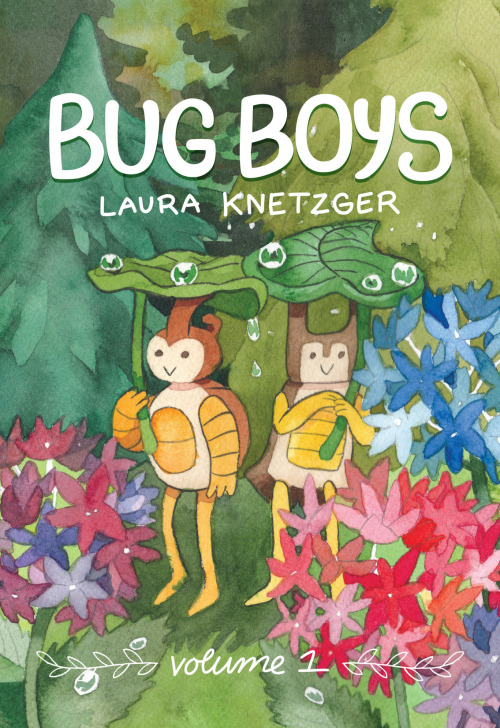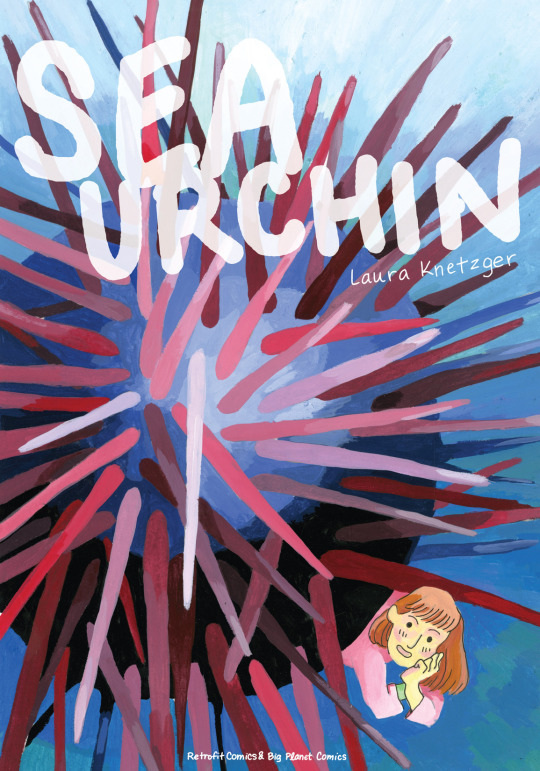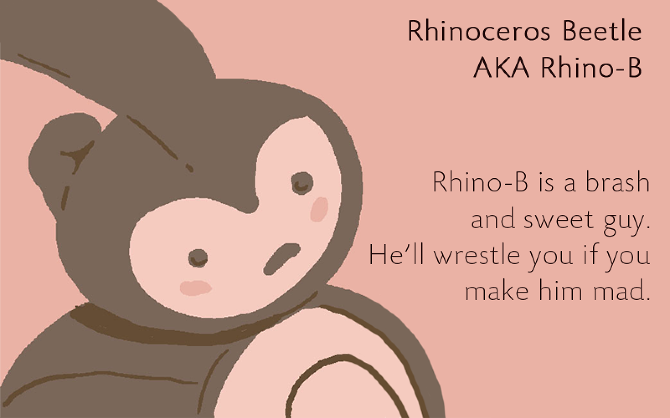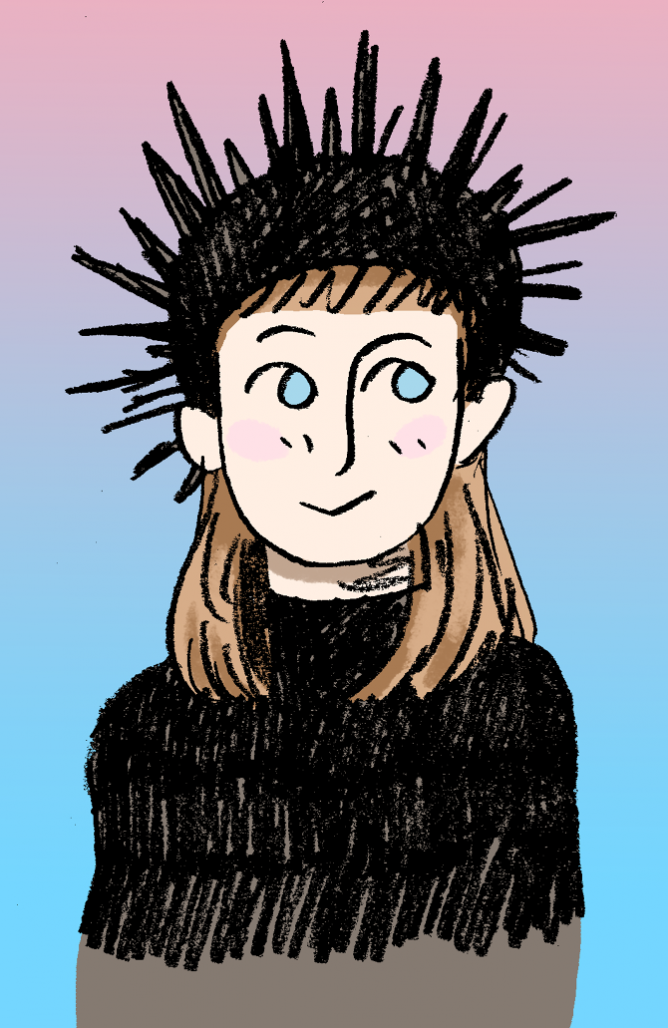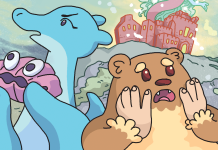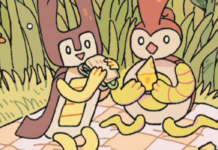Small Press Expo (or SPX) nonprofit created in 1994 to promote artists and publishers who produce independent comics. It’s mission is to “To provide a forum to showcase new and emerging talent in the fields of comics, graphic novels and political cartooning”. In the spirit of this mission, the Comics Beat has conducted a series of interview with some of the phenomenal cartoonists in attendance at this year’s Small Press Expo. We hope that these interviews will improve our understanding of these creators voices, techniques, interests and influences.
In this second SPX 2017 interview series, we talked with Laura Knetzger. Laura is cartoonist and illustrator from Seattle. In addition to her comics work, she’s also storyboarded episodes of Adventure Time. Her comic Sea Urchin remains to this day one of the best that Retrofit Comics has published. I’ve reached out to Laura to talk about her recent hourly comics, Bug Boys, the recurring theme of depression in her work as well as other items of interest.
—
Philippe Leblanc: For those readers who may not be familiar with you and your work, can you tell us a little bit about yourself?
Laura Knetzger: I’m a cartoonist from Seattle. I graduated from the School of Visual Arts in 2012. I make short comics about feelings, including a series of all-ages adventure stories called Bug Boys.
PL: You’ve been making a lot of hourly comics over the past year. Those tend to be quite challenging. I’m wondering what keeps you coming back to this type of comic?
LK: Attention! I get attention when I do them. This sounds flip but it’s a very real part of the answer. The other part is that I love diaries and memoirs. I like that I’ll have a record of a few days from this particular part of my life. When things are different I’ll be glad for that record. I keep making hourly comics because I crave the connection it brings when someone reads it and gets it. I love other people’s memoirs or autobio comics because it’s a window into another person’s mind. If that person has a similar life and values to mine, there’s a thrill of connection. If they’re very different, then it’s broadening to learn about their life.
My autobio work is all done when I need an immediate connection to people, and my fiction work is my “serious” art done for my career. A friend of mine called me out a while back for not taking my autobio work seriously enough and he’s right. I make it fast and post it online because I want a connection. I want to make some more focused autobio stuff about specific experiences.
PL: You’ve recently been working on Adventure Time as well as various video games. I’m wondering what those two experiences are allowing you to learn that you can bring back to your comics work.
LK: Working with animation or game teams has taught me a lot. The most important thing I learned is that you have this core genius that only you have. The work you make comes from that, and it can only be made by you. Learning to make an animation storyboard is like a new language but the work is still fueled by the same core feeling that I use to make a comic. Honestly working in a new medium is mostly a matter of learning the details of how the information is delivered and what tools each team uses. (How many poses do I need to do to show this character’s movement? Do I deliver this game asset as a PNG or PSD?) I learned my core genius is flexible if I push it to be communicated through a different medium. I have to trust in my ideas but show them in a new medium.
Basically, don’t think you can’t do something just because it’s new. Learning a new skill is uncomfortable because you make a bunch of mistakes and have to ask for help a lot, but your core genius is why the team hired you and that can’t be taken away. One of the notes in the materials Adventure Time gives to its story boarders is “Don’t do what you think ‘Adventure Time’ wants. Do the story how you would do it.”
PL: The first work I read from you was a fascinating small comic you did for Yeah Dude Comics called Find Me, Look for Me. It was the story of a young woman taking an alien under her wings. She’s struggling to get through a depression after having lost her brother. Depression is a recurring theme in your work both in this comic and in Sea Urchin. Why is that?
LK:. Holy moly that’s kind of a deep cut! I keep forgetting I made that zine. I’ve been trying to revisit the alien story for years and expand on it a bit but I keep putting it off.
Sea Urchin is a little different because that was autobiographical. Box Brown asked me to make an autobiographical book for Retrofit and I was going through something bad at the time, so I made comics about that. I was extremely self conscious about it, I thought people were going to think I was a horrible person.
I think depression is a recurring theme in my fiction work because I’m interested in how people find hope. There’s a certain tone I want to hit with my work, where a character is tipping between the dark and the light. There’s a mingling of emotions and it can’t be kept neat. I keep writing stories that I can build to that tone.
PL: You’ve been working on Bug Boys, the adventures of Stag-B and Rhino-B, two beetles exploring their village, the forest and their own mind. Czap recently published a collection of the work to date. In many ways, it is a much lighter, or at least sweeter work read than your other comics. Do you feel you need that balance between the heavier and lighter content in your comics?
LK : It’s a conscious decision to try to keep Bug Boys light. There are some issues that are about characters feeling sad, but I want those stories to be about dealing with bad feelings in healthy ways. I’m mostly making Bug Boys for myself, but I always want it to be appropriate for a child to read. I think it’s irresponsible to tell a child a story that has no hope in it. Adults can handle bleak stuff, and teens love it, but sad stories with no hope were just too disturbing to me as a kid.
I had a pretty idyllic childhood but I still spent a lot of time feeling sad, scared, confused, or overwhelmed for a lot of reasons. Adults jerk kids around a lot. A teacher I loved could say one mean thing to me and suddenly become a terrifying figure. A lot of kids’ media I consumed didn’t have advice on what to do with bad feelings, other than to just buck up and smile. Adults gave even worse advice, they would just tell me I was too sensitive. I wasn’t even really advised to solve my problems, just ignore them. I want Bug Boys to show child characters who have these bad feelings and it’s normal. The problems behind them can be solved, and if they can’t, there are ways you can cope. Also I want to make straightforward adventure stories, because those are really fun to make and they keep things balanced.
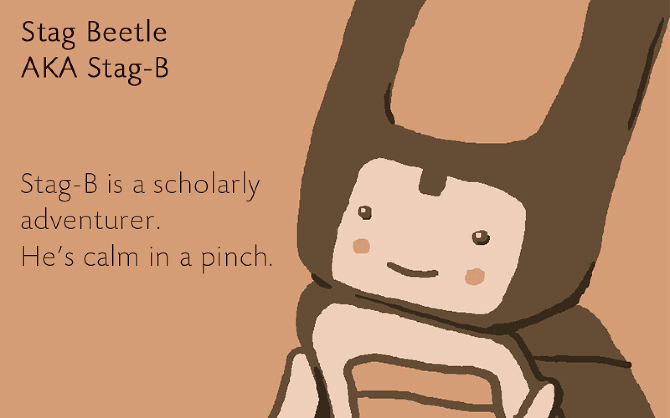
PL: Do you have any new comics or material you’re bringing to SPX? If so, can you tell us a little bit more about them/it?
LK: Yes! I am debuting Bug Boys 15 at SPX. It’s about 60 pages long; it’s about Rhino-B and Stag-B’s first visit to a big city. It’s not a sad one!
PL: What do you want readers to take with them once they’ve finished reading your comics?
LK: There’s no such thing as absolutes. Everything is complicated. It’s hard but you shouldn’t give up. Drawing and making things is really fun. You can forgive yourself.
—
You can follow Laura Knetzger’s work on her website, her tumblr or follow her on Twitter.
She will be at SPX this weekend at table L2A with her latest issue of Bug Boys and other comics. She’s looking forward to meeting you!


